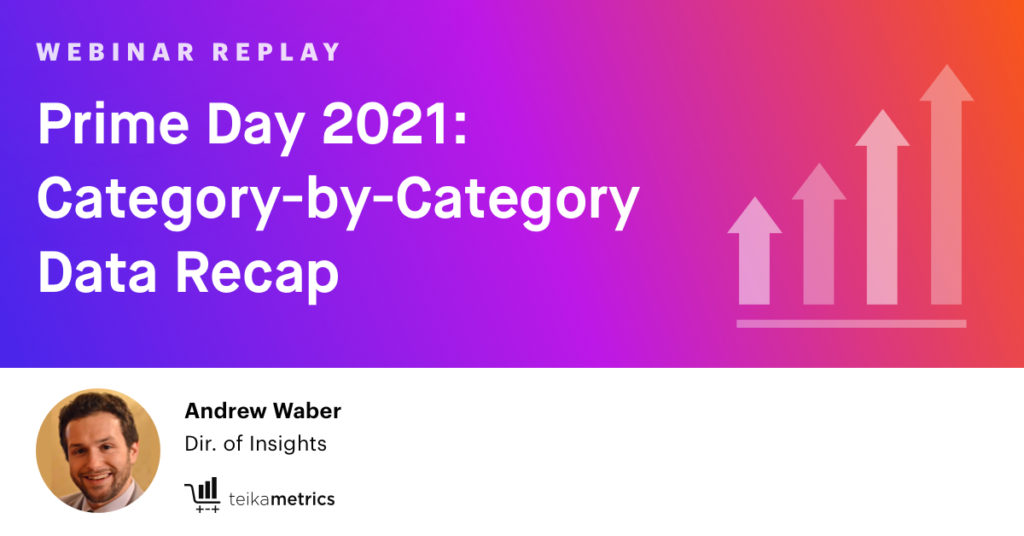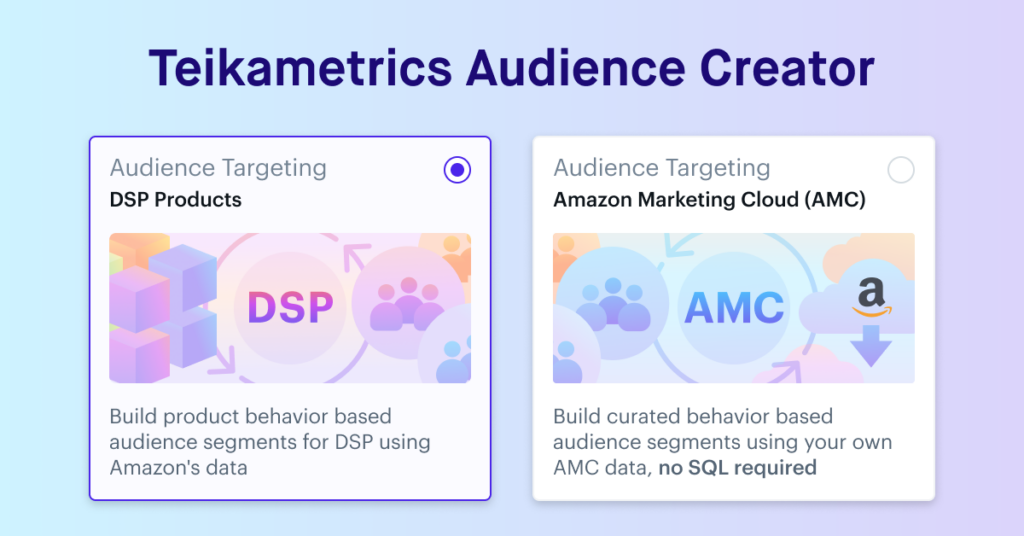Compare Your Business Performance To Your Category
How did your business fare on Prime Day? Wondering if the rest of your category had the same experience?
In this webinar, Andrew Waber, Director of Insights, details data gathered across thousands of Teikametrics sellers to provide rich, category-specific insights across a range of advertising, organic, and other metrics.
Check out the webinar replay and key takeaways below as you prepare for the back-to-school and Q4 shopping seasons.
Webinar Topics
- Category-specific insights around key advertising metrics
- How organic activity accelerated on Amazon vis-a-vis advertising
- Larger trends across the Amazon marketplace over the sale event
- Actionable advice for sellers based on these learnings
Show Links
- Connect with Andrew and Teikametrics
- Subscribe to the Page One newsletter to be sure to be alerted when the full Prime Day Data report is out
Read Our Previous Reports
- 2020 Amazon Search & Advertising Benchmark Report
- 2020 Holiday Season Analysis
- Amazon Prime Day Report 2020
- Initial Impact of COVID-19 on Amazon Sellers
Watch the Advanced Strategies for Global Ecommerce Success Replay:
Key Takeaways
Benchmark your performance on your category
Andrew explained that it’s helpful to compare your own Amazon Prime Day performance to data from your category, because trends differed across categories.
“As we go through these statistics, I’m hoping that you can look at your own performance. If you’ve taken a look back at how Prime Day performed for you, use that as a baseline to see, as we look at these wider categories, how you compared. Did you over-perform compared to the rest of your category, or underperform?”
– Andrew Waber
It wasn’t the same old Prime Day
After Prime Day 2020 got pushed to October, this year’s prime Day timing was much closer to what it’s been in previous years. That doesn’t mean that everything reverted back to normal.
“if you’re a seller, it wasn’t the Prime Day that you experienced 2, 3, 4, 5 years ago. FBA is still more restrictive than it was two years ago. And we talked to a lot of sellers, especially if they have any China suppliers, who still have remaining supply chain challenges. That had an impact in terms of… what they were able to offer, shipping times, et cetera. So there was a lot that’s different. It wasn’t the same old Prime Day.” – Andrew Waber
Household essentials and grocery played a bigger role this year
The pandemic changed people’s shopping habits and Prime Day exhibited the effects. In past years, high-consideration items like consumer electronics were the star of the Prime Day show, but this year household essentials and grocery were also winning categories.
“This may have to do with this change in consumer behavior. Consumers are coming to online channels more often during the year for items that were lower consideration. Particularly those around grocery and health and household which aren’t things that you’re thinking: ‘I want to deal-hunt, I’m going to go on Prime Day.’ But we did see all those categories as well rise up at nearly the same rate as we saw some of the more traditional Prime Day categories.”- Andrew Waber
Increased CPCs are worth it if search volume increases more
On Prime Day some categories saw rises in CPCs but even more substantial rises in search volume, ultimately making Prime Day profitable and the cost of advertising worthwhile.
“Even if the CPC went up marginally, if you were able to still get sales, and… you took advantage of that volume, that’s a good thing. You’re able to really drive a successful Prime Day through these types of tactics. Maybe you had to cut into your margin a little bit, but it was still worth it for you.”- Andrew Waber
Electronics was a high volume category
Electronics is a great example of a category that saw an increase in CPCs but a much bigger percentage increase in search volume
“I’m sure every electronics seller knew coming in ‘this is a huge sale event for me.’ It’s likely even that increased advertiser activity was really just outpaced by the sheer increase in search volume.” -Andrew Waber
Home and Kitchen is driven primarily by unbranded search
In many categories, such as Toys and Games, customers start a search with a brand in mind, but for Home and Kitchen, they often know the type of product they want, like for example, a sink, but don’t have an idea of what brand they want.
“Home and Kitchen, in particular, is really dominated by unbranded searches at the top of the most popular searches in that category.” -Andrew Waber
Contextualize total revenue changes against ACOS changes
Andrew discussed how rises in ACOS were justified by larger rises in total revenue. For example, in the Baby category total revenue grew 88% while ACOS rose 26% during Prime Day.
“ACOS is important. It’s definitely important to pay attention to… but total revenue and understanding how you’re able to drive that total revenue, even if the cost is a little bit inflated, is really important.” -Andrew Waber
Conversion rate lifts were very close to what they were in 2019
Analyzing on a per-advertiser basis, we’ve tracked lifts in conversion rate across the last three Prime Days. The lift in 2021 was very similar to the lift in 2019, whereas the 2020 lift was much higher, likely because of the timing.
“In 2021, it was plus 7%. In 2019 it was plus 6%. A different story in 2020, because that Prime Day was held in October… There was maybe a lull in traffic at the time, so you saw a bigger conversion rate increase period-over-period.” – Andrew Waber
During Prime Day there was an increase in volatility of top keywords
A typical week-over-week variance in the top 100k keywords is 8%, but during Prime day week it rose to 12%. This degree of variance requires automated bidding to take full advantage of the opportunities.
“During these sale events there are keywords that were not as popular before, and then they become incredibly popular during the sale event. This is an opportunity… It’s something that our system does without much human intervention, which is to up-level these and make hay, let’s say move something from an automatic campaign into a manual campaign.” – Andrew Waber





